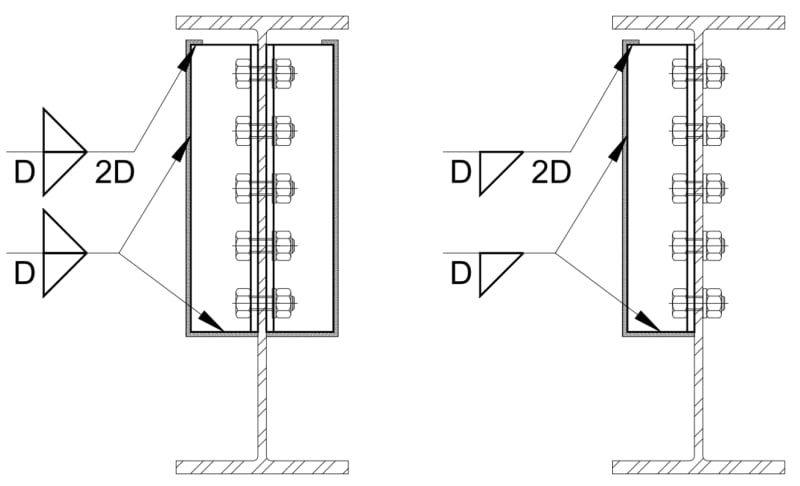I am currently designing an industrial building that is to be embedded in the side of an existing hill. The design requires a suspended floor and I will have some steel beam that need to be supported by a perimeter concrete wall. Under normal conditions, I am planning on resting the steel beams on a steel angle that is cast into a pocket in a wall. Where I have steel column that rest on the wall, I would like to cast an embedded plate into the column pier vs increasing the size of the pier for a pocket to support the beam.
I am currently trying to check the design of this embedded plate in accordance with the method found in the PCI Design manual. I am calculating the following (see attached calculations)
Phi Vc = 58.1 kips
Phi Vy = 76.9 kips
What is throwing me off is the number de. Since my wall is planned to be approximately 13’-6” tall my de = calculated as approximately 156” which has a huge effect on the capacity.
Are my numbers off based upon the design criteria I am showing in my calculations? Is Pu=40k too much load to be putting on an embedded plate like this?
I am currently trying to check the design of this embedded plate in accordance with the method found in the PCI Design manual. I am calculating the following (see attached calculations)
Phi Vc = 58.1 kips
Phi Vy = 76.9 kips
What is throwing me off is the number de. Since my wall is planned to be approximately 13’-6” tall my de = calculated as approximately 156” which has a huge effect on the capacity.
Are my numbers off based upon the design criteria I am showing in my calculations? Is Pu=40k too much load to be putting on an embedded plate like this?

